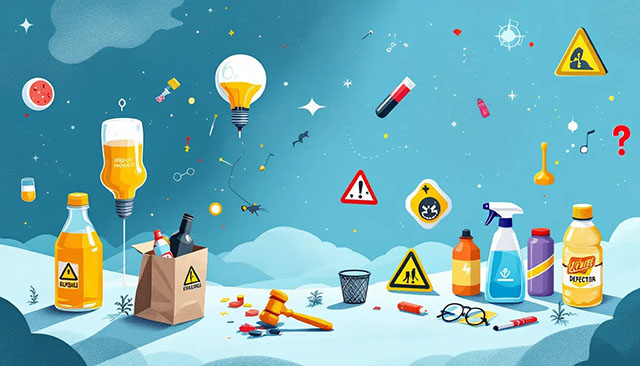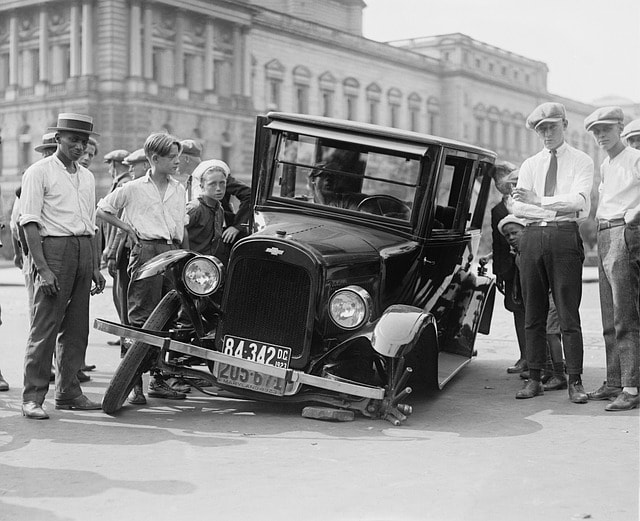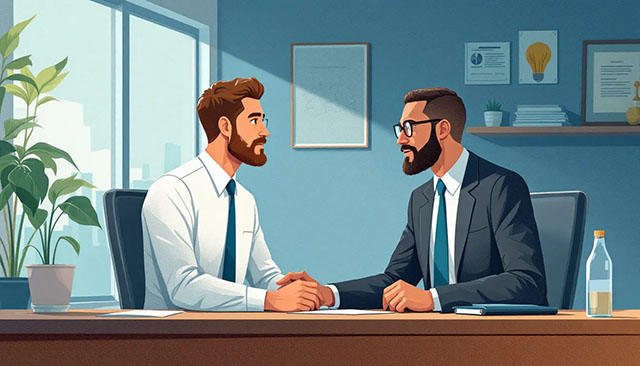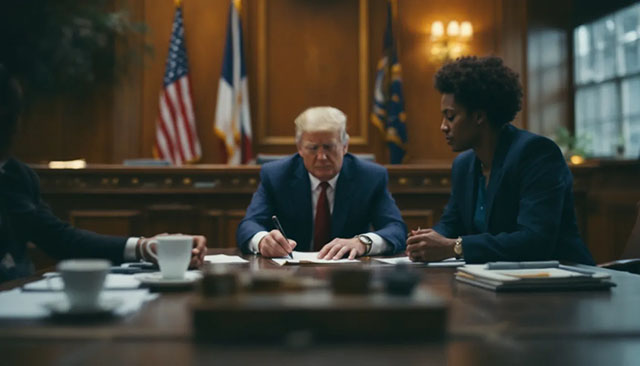Paragard
Are you one of the many women experiencing serious complications from the Paragard Copper IUD?...
If you’ve been injured by a defective product, you may have the right to seek compensation for your injuries and losses. Defective products lawyers can help you navigate the complex legal process. Learn about your rights, types of defects, and how to file a claim. In this article, we’ll unravel the complexities of product liability, highlighting how a skilled defective product lawyer can help you navigate the path to justice and accountability. Don’t let negligence go unchecked — learn how to protect yourself and your loved ones.
Are you one of the many women experiencing serious complications from the Paragard Copper IUD?...
Hernia Mesh Lawsuit Attorney Were you injured by a hernia mesh implant? You may be eligible to...
3M Earplug Lawsuit Attorney Defective 3M earplugs have caused hearing loss and tinnitus for...
Has your health been compromised due to the use of Bard PowerPorts? You deserve justice, and...
TIVAD Lawsuits: Pursuing Justice for TIVAD Ports (Port-a-Cath) Victims Welcome to the Law...

An illustration depicting the concept of product liability, showcasing various defective products.
Product liability is a critical aspect of consumer protection that holds manufacturers, suppliers, and retailers accountable for the safety of their products. These parties must uphold their responsibility to produce and distribute safe items. Manufacturers are responsible for product safety during the design process, and distributors and retailers must ensure the products they sell are safe for consumers.
Product liability can arise from various types of defects, including design, manufacturing process, or marketing defects. These defects can make a product unsafe and lead to serious harm. When a product injures a consumer, determining the type of defect and the responsible party is crucial. Knowing product liability helps consumers understand their rights and seek justice and compensation for injuries.
A product liability lawyer specializes in navigating these complex cases. They help victims of defective products by proving that the product was unreasonably dangerous and that the defect directly caused their injury. With their expertise, they protect consumers and hold manufacturers and sellers accountable, ensuring that safety standards are maintained.

Automobile, defect, broken.
Defective products fall into three main categories: design defects, manufacturing defects, and marketing defects. Each type of defect poses unique risks and challenges in proving liability. Understanding these categories can help consumers identify potential hazards and take appropriate action if they are injured.
Design defects are inherent flaws in a product’s design that make it unsafe even when manufactured correctly. These defects are present from the very beginning, before the product is even produced. For instance, a car with a design flaw in its braking system poses a significant risk to drivers, regardless of the quality of the manufacturing process. Proving design defects often requires evaluating the reasonableness of the design standards, which can be challenging.
Manufacturing defects occur during the production process, resulting from errors or poor-quality materials. These defects are usually unintended and can affect only a few items in a production batch. For example, a medical device with faulty components due to a manufacturing defect can cause severe health issues for patients. Identifying manufacturing defects requires tracing the production process to uncover errors.
Marketing defects, also known as failure to warn, occur when a product lacks adequate instructions or warnings about its proper use and potential risks. These defects can lead to misuse and injuries because consumers were not properly informed. For instance, if a chemical cleaning product lacks clear warnings about the need for protective gear, users could suffer chemical burns or poisoning. Proper labels and warnings are essential for consumer safety.
Injuries from defective products can be devastating and varied. Common injuries include:
These injuries can occur from everyday items, such as defective toys leading to lacerations and fractures, or improperly designed medical devices and implants causing internal injuries.
Real-life cases highlight the severe consequences of defective products, including instances where a dangerous product led to significant harm. For example, numerous veterans have reported hearing loss due to defective 3M military ear plugs, while countless women have experienced severe complications from the Paragard IUD. The infamous incident involving Stella Liebeck, who suffered severe burns from hot coffee served by McDonald’s, resulted in a significant settlement. These cases highlight the urgent need for accountability and justice in the face of negligence.
Injuries caused by defective products often have a profound impact on victims’ quality of life and financial stability.
Product liability law holds multiple parties accountable for harm caused by defective products, including manufacturers, distributors, suppliers, and retailers. This means that anyone involved in the product’s journey from creation to sale can potentially be held liable. For instance, a defective toy that injures a child can lead to liability claims against the manufacturer who made it, the wholesaler who distributed it, and the retailer who sold it.
Injured consumers can sue product designers, distributors, sellers, or marketers. An experienced attorney can identify all responsible parties, ensuring accountability throughout the distribution chain.
In complex scenarios like foodborne illnesses, liability for a defective product can be shared among various parties.
To prove a product liability claim, one must show that the product was defective and that this defect directly caused the injury. Consumers have the right to expect that products will be safe to use when used as intended, and if harmed, they can seek compensation. Establishing causation is crucial, as it links the defect to the injury sustained.
Evidence such as expert testimony, product documentation, and other critical materials plays a vital role in proving product liability cases. A defective product attorney gathers and analyzes evidence to build a strong case, obtain documents from the defendant, and avoid mistakes that could undermine the claim.
In negligence cases, the plaintiff must demonstrate that a lack of reasonable care resulted in the defect causing injury. Furthermore, it must be shown that the product was not safe for use in its sold condition. This often requires proving that safety measures or warnings were inadequate.
The types of product claims can arise from three primary legal theories: negligence, strict liability, and breach of warranty. Each type of claim has different requirements and implications.
Negligence claims require proof of carelessness in a product’s design or manufacture. The carelessness must be shown to have caused injuries. This involves proving the manufacturer failed to exercise reasonable care in ensuring the product’s safety. For example, if a company neglects to conduct proper testing on a new toy, resulting in injuries to children, this could form the basis of a negligence claim.
Strict liability claims focus on the defect’s presence and the injury sustained. Under strict liability, showing that the product was defective and caused harm is sufficient, without needing to prove negligence. This approach is particularly useful in cases where proving negligence is challenging but the defect is clear.
Breach of warranty claims involves broken promises about a product’s quality or safety. This can include express warranties, which are written guarantees, and implied warranties, such as the expectation that a product will be safe to use for its intended purpose. For example, if a power tool fails to perform safely as per its express warranty and causes injury, a breach of warranty claim could be pursued.
Filing a product liability lawsuit involves several critical steps, beginning with gathering evidence. Key evidence includes keeping the defective product, purchase records, medical documentation, and witness statements. This evidence is crucial for building a strong case and proving the defect and resulting injury.
The process starts with filing a complaint outlining the plaintiff’s details, defendants, factual allegations, legal theories, and the relief sought. Next, serving the defendants informs them of the lawsuit and allows them to respond appropriately. The discovery phase follows, allowing both parties to exchange information and strengthen their cases.
Settlement negotiations can occur at any stage to resolve the case without going to trial. If the case proceeds to trial, both parties will present their evidence, make opening statements, and provide closing arguments. After the trial, the losing party may file motions for a new trial or appeal the decision.

An image representing damages recoverable in a product liability case, with medical bills and lost wages.
Plaintiffs in a product liability case can recover various types of damages to obtain compensation. Compensatory damages aim to restore the plaintiff to their original condition before the injury. Economic damages cover direct financial losses such as medical costs, lost income, and future medical expenses.
Non-economic damages, or general damages, cover subjective losses like pain and suffering, emotional distress, and disability. For example, someone suffering a severe injury from a defective product may be compensated for the physical pain and emotional trauma endured.
Punitive damages serve to penalize defendants for particularly harmful or reckless behavior. These damages are awarded in cases of particularly egregious actions by the defendant, deterring future misconduct. A product liability lawyer ensures all potential damages are accounted for, helping clients receive full and fair compensation.

An illustration of a product liability lawyer consulting with a client about a defective product case.
Product liability lawyers are essential in navigating the complexities of these cases. Consulting a qualified product liability attorney helps evaluate the case and determine the right legal approach. They assist in collecting evidence, identifying liable parties, and building a strong case to secure deserved compensation for victims. Product liability attorneys play a crucial role in this process.
Lawyers help clients avoid common pitfalls that could weaken their claims and provide expert guidance throughout the legal process. Whether it’s a class action or an individual lawsuit, having experienced product liability attorneys from a law firm on your side can make a significant difference in the outcome of a product liability case.
At the Law Office of Paul Mankin, APC, we understand the complexities surrounding product liability cases and the profound impact defective products can have on individuals and families. Our law firm of defective product lawyers is dedicated to helping victims navigate the daunting legal landscape of a product liability lawsuit. Please give us a call at 800-219-3577 to schedule your free consultation.
Class action lawsuits enable a representative group to pursue claims on behalf of many individuals who suffered similar harm from a defective product. This approach is efficient for cases where many people are similarly injured, making individual suits costly. However, class actions may not be suitable for severe or unique injuries, as they might not provide adequate compensation for individual circumstances.
Individual lawsuits provide personalized representation and greater control over the case. This approach benefits plaintiffs with unique or severe injuries requiring specific attention.
Understanding the differences between class actions and individual lawsuits helps consumers choose the best legal strategy for their situation.

A visual representation of successful product liability lawsuits, featuring courtroom scenes.
Successful product liability lawsuits demonstrate the effectiveness of legal strategies in combating defective products and securing justice for victims. One notable case resulted in a $3,996,676 verdict for the plaintiff against the product manufacturer. These cases highlight the importance of legal representation in achieving favorable outcomes.
These lawsuit outcomes significantly contribute to improved consumer safety standards. By holding manufacturers accountable, these cases ensure that products on the market are safe and reliable, protecting future consumers from similar harm.
Product liability laws protect consumers from harm caused by a defective and dangerous product. To succeed in a liability claim, a plaintiff must demonstrate that a defect in the product led to their injury. Under product liability law, manufacturers and sellers can be held accountable for injuries caused by their malfunctioning products. Product liability attorneys often provide free consultations to evaluate potential claims.
Knowing product liability empowers consumers to seek justice and compensation when harmed by defective items. Whether through individual lawsuits or class actions, legal avenues exist to protect consumers and uphold product safety standards.
If you or a loved one has suffered due to a defective product, don’t hesitate to seek legal help. Product liability lawyers such as our attorneys at The Law Office of Paul Mankin, APC, are here to guide you through the process, fight for your rights, and ensure you receive the compensation you deserve. Knowledge is power, and being informed is the first step towards justice. Contact us at 800-219-3577 to schedule your free consultation and let us advocate for you.
Product liability is the legal obligation of manufacturers, suppliers, and retailers to protect consumer safety, holding them accountable for injuries caused by the defectiveness. Therefore, if a consumer is harmed by a faulty product, those involved in its distribution may face liability.
The different types of product defects are classified into three main types: design defects, which are flaws in the product’s design; manufacturing defects, which occur during the production process; and marketing defects, which involve insufficient warnings or instructions. Each type significantly impacts consumer safety and product effectiveness.
Manufacturers, distributors, suppliers, and retailers can all be held liable for harm caused by a manufacturing defect, with liability potentially shared among the various parties involved in the distribution chain.
To successfully prove a claim, you must establish that the product was defective and that this defect directly caused your injury. Supporting evidence like expert testimony, product documentation, and medical records will be crucial in substantiating your case.
In a product liability case, you can recover compensatory damages, including economic losses like medical expenses and lost income, as well as non-economic losses such as pain and suffering. Additionally, punitive damages may be awarded in cases of particularly harmful or reckless behavior.
The Law Office of Paul Mankin represents people in personal injury, consumer protection, and product liability cases out of our California office. We’re passionate about helping our clients gain significant financial recoveries and protecting consumers from fraudulent practices. We take a personal approach to each case, working with you to create a favorable case outcome, whether in or out of the courtroom.

Thank you for all your time and patience regarding my situation and having the settlement win in our favor!
If anyone is looking for a knowledgeable attorney, look no further!
Explore free, informative posts written by our team of experts, related to our practice areas.
Buying a used car can be exciting—but it can also be risky if you’re not aware of the common warning signs to watch out for. Unfortunately, some car...
Read More"They Never Told Me the Car Had a Branded Title" A California consumer thought she had found the perfect used SUV at a dealership in Bakersfield. It was...
Read More"I Didn’t Know It Was Salvage Until It Was Too Late" “Ashley” was thrilled when she bought her first car from a dealership in Los Angeles. It looked...
Read More